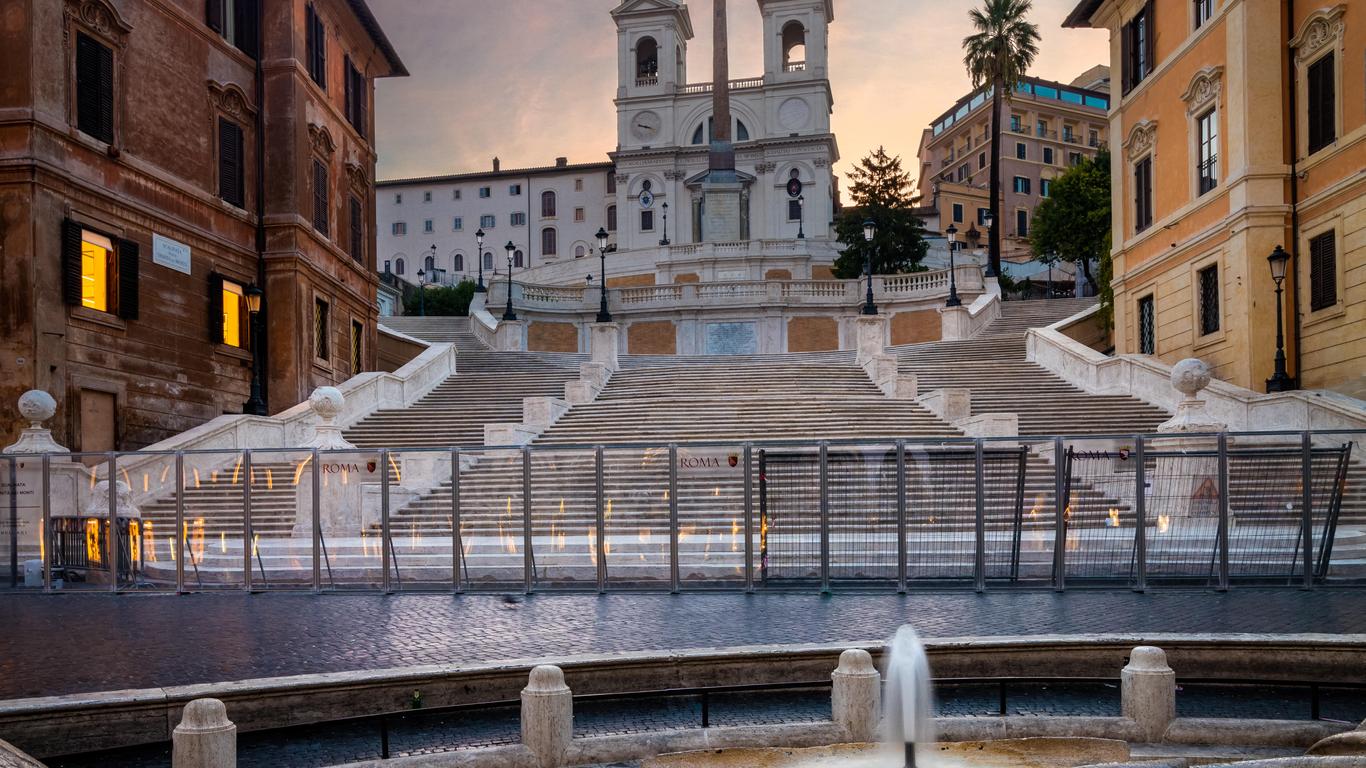Evocative and enchanting, the Spanish Steps are one of the great landmarks of Rome. The 135 steps link the Holy See, the boundary of the Vatican State, with the Trinita dei Monti Church and Bourbon Spanish Embassy. Built in the early 18th century, they're most memorably photographed from below, at the Piazza di Spagna and Fontana della Barcaccia.
In many ways, the Spanish Steps stand at Rome's symbolic divide. From the bottom, step visitors alight onto the history and heritage of old-world Rome. The jurisdiction of the Vatican traditionally started from the top of the steps. They've become one of the city's most important centrepieces, and a whole host of famous attractions can be found within walking distance. They're usually filled with people and have had to undergo several major reconstructions are a result of the huge footfall on the steps. From Piazza di Spagna at the base, the building to the right of the steps is the former home of, and museum dedicated to, poet John Keats. Further along is the exquisite facade of the 15th century Ferrari di Valbona, formerly the palace of a cardinal. From the summit, a road ascends further to Pincian Hill and Villa Medici.
The Spagna Subway Station is less than a two-minute walk from the Spanish Steps and the easiest way to reach this attraction.
A Rome legend says that the Spanish Steps became a popular place for artists and painters to hang out, due to the elegance of their design and views onto the square. The steps attracted women aspiring to be models, which in turn brought Romans and travellers. The Spanish Steps continue to be a popular place for people of all backgrounds to meet.





